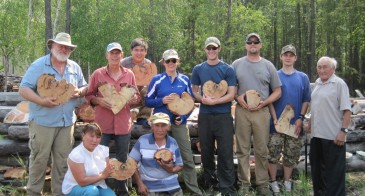Minimum blue intensity measurements of resin-extracted Pinus sylvestris samples, are shown to provide a robust and reliable surrogate for maximum latewood density. Blue intensity data from fifteen trees, are reported relative to a standard blue-scale in a manner similar to grey-scale calibration in X-ray densitometry. The resulting time series are highly correlated with X-ray densitometry data generated from the same samples and preserve a high level of signal strength.


